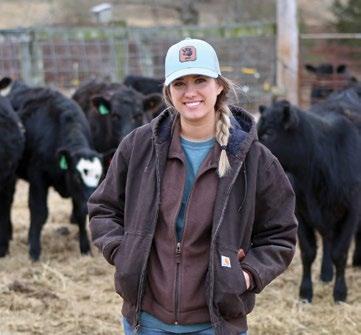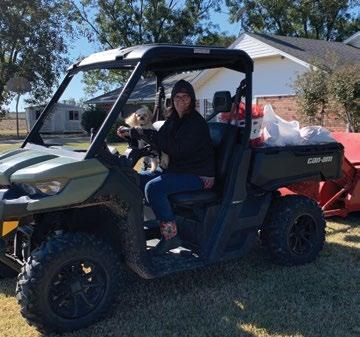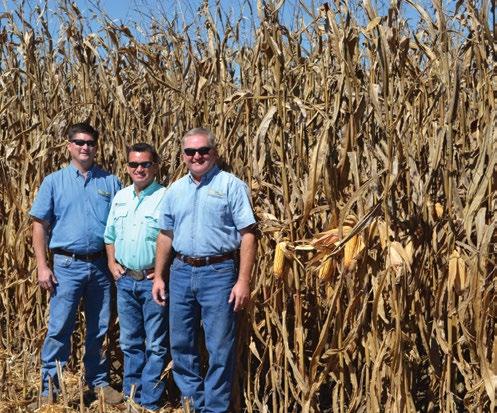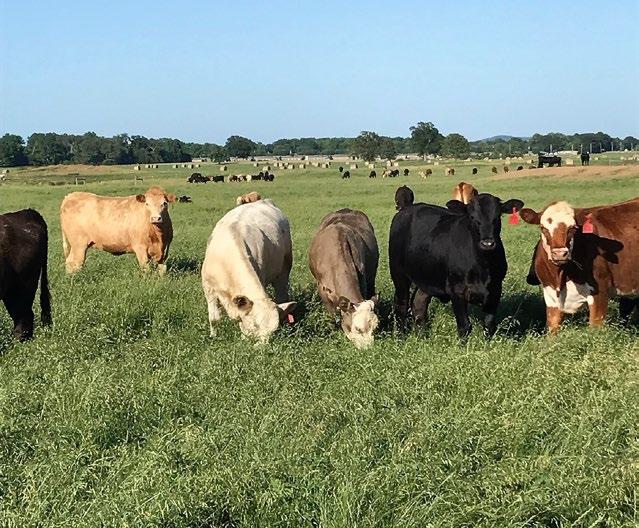
5 minute read
From Work Boots to High Heels
from Arkansas Grown
Local Women are Making a Big Impact in the Field and the Boardroom
Women have always had a place at the table in Arkansas agriculture, and they are moving themselves to the head of the table in increasing numbers.
Advertisement
In just a few years, the number of female principal farm owners has increased significantly, according to the U.S. Department of Agriculture’s Census of Agriculture. Overall, the total number of female agricultural producers in Arkansas jumped from 22,258 to 25,396 over a five-year period. In the United States, 36 percent of all farmers are female.
“Agriculture is changing. We’re seeing many more women involved in farming and in more leadership roles,” said Barbie Johnson, a board member for Arkansas Women in Agriculture and a partner in Gilliam Farms, a 135-year-old family farm in Desha County.
“I don’t see us doing more than our mothers or grandmothers did. We’re still working in the same roles on the farm, but now in more leadership roles,” Johnson added.
Johnson and others believe that percentage is higher, since many women still work behind the scenes or in non-farm jobs that support the overall operation of a family farm.
“My view is that women who are involved in farming are part of an overall farm team,” Johnson said. “There is a variety of roles out there.”
Johnson noted that she was the farm’s bookkeeper for many years while holding a full-time job as a professor at the University of Arkansas at Monticello.
“Women in Arkansas are being encouraged to pursue careers in the agricultural industry by a strong group of female farmers,” added Johnson. Arkansas Women in Agriculture offers a significant networking component with professional development and mentoring opportunities.
Those opportunities came at the right time for Lindsay Holtzclaw, 2nd vice president of the organization. Holtzclaw is a communications specialist for Farm Credit of Western Arkansas. She became engaged with the group while she was a student and credits other women in agriculture for support.
“There is pressure being in a group that’s tasked with feeding and clothing the world,” Holtzclaw said. “It’s uplifting to be a part of so many women who have made strides in agriculture. It’s special to see all these women who were role models for me. It’s a great group to be a part of.”
Holtzclaw majored in agribusiness and public relations at Arkansas Tech University in Russellville. Her role is one of many nonfarm roles for women in agriculture that are increasing in numbers. Holtzclaw listed a litany of agriculture occupations, like hers, that are ideal: “it could be a position in credit or finance, food technology, agriculture educators, the extension service… any type of industry you want to go into can be related back to agriculture.”
There are many opportunities for women in state and federal government agencies, including the Arkansas Department of Agriculture (Department) and the United States Department of Agriculture’s Natural Resources Conservation Service and the Farm Service Agency, that work with and support the
agricultural industry. Evette Browning has worked at the Department since 2002, starting in the Forestry Division and is now on the fiscal staff. Browning also serves as the Department’s minority outreach coordinator and is 1st vice president of Arkansas Women in Agriculture.
“While some women have chosen to go into agriculture, others have found themselves in the forefront of operations that had been managed by fathers, husbands, or brothers,” Browning said. “Annie’s Project courses are a great way for women to get extensive hands-on training on how to lead their operations with confidence. I believe that women are strong, resilient, capable, and should be taken seriously as farmers, forest landowners, producers, and other agriculture professionals.”

Women have also been moving toward technologybased jobs in precision agriculture, which relies on GPS and other technological advancements to manage and improve farm output.
Further, advertisers and marketers are finally recognizing that women have long been decisionmakers in the industry, and they are tailoring their messages accordingly.


Arkansas Women in Agriculture hosts a conference for the state’s female leaders in the farming industry every spring. To learn more about the organization, visit arwomeninag.org.

TOMMY YOUNG and his nephews, Blake and Jim Young, farm more than 7,000 acres of row crops near Tuckerman. Tommy’s father, Norman, began their family farm in 1943 with just 40 acres.


More than 70% of the CORN grown in the state of Arkansas is used to feed the local poultry market.
FROM OUR FARMS TO YOUR TABLES
SORGHUM offers a gluten-free alternative to wheat flour.


SORGHUM CROP St. Francis County
ARKANSAS ASSOCIATION OF CONSERVATION DISTRICTS Helping people help the land in Arkansas
Conservation Districts are committed to locally led cooperative conservation to promote productive soils, clean abundant water, healthy plant and animal communities, clean air, and efficient usage of water and energy. Conservation District offices are located in every county to provide technical and financial assistance for conservation in partnership with universities as well as state, local and federal agencies. They help landowners, farmers and ranchers develop conservation activity plans and provide advice on the design and management of recommended conservation practices. Please contact us with the information below on how to get started with water quality, soil health, irrigation, wildlife habitat, pesticide risks, and sustainability by using the contact information below.

FOR MORE INFORMATION: contact (501) 904-5575 or visit us at www.aracd.org


FORESTRY OVERVIEW
Forest Health, Development and Conservation, Wildfire Suppression
44 MILLION tons of forestry products and timber produced
ARKANSAS IS NATIONALLY RANKED #6 IN FORESTRY PRODUCTS VALUED AT OVER $6.4 BILLION
ARKANSAS HAS 12 BILLION TREES
NEARLY 19 MILLION ACRES OF TREES
56 %
THAT’S MORE THAN 56% OF THE STATE’S ENTIRE LAND MASS!
THIS MUCH FORESTED LAND REQUIRES THE HELP OF THOUSANDS OF VOLUNTEER FIREFIGHTERS
1,626 VOLUNTEER FIREFIGHTERS TRAINED IN 2019
14,242 TOTAL VOLUNTEER FIREFIGHTERS
85 FIREWISE COMMUNITIES
461 WILDFIRES IN 2019 burning over 6,000 acres!
6,882,925 SEEDLINGS PLANTED AT BAUCUM NURSERY (hardwood & pine)
3,347 LANDOWNER ASSISTS (supporting forest management plans and general forestry needs)
41 TREE CITIES (reaching more than 837,836 Arkansas residents)










